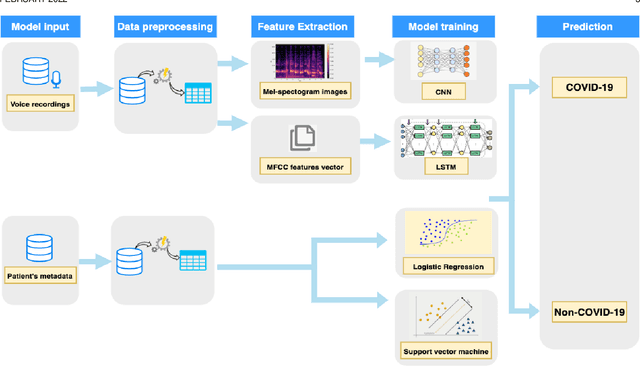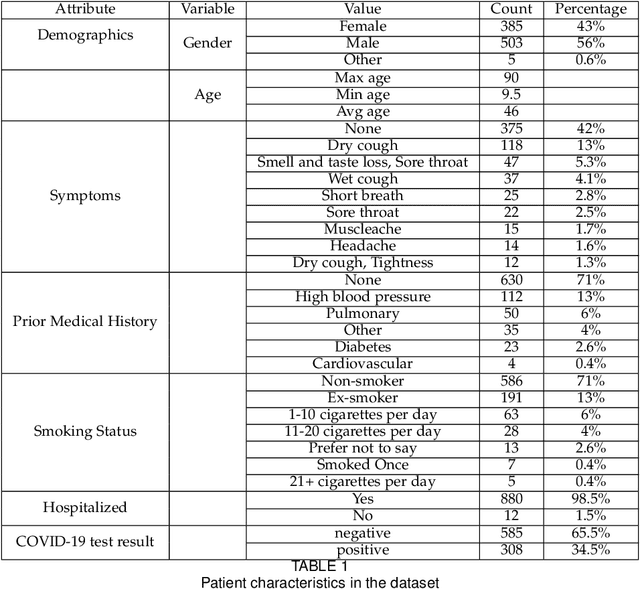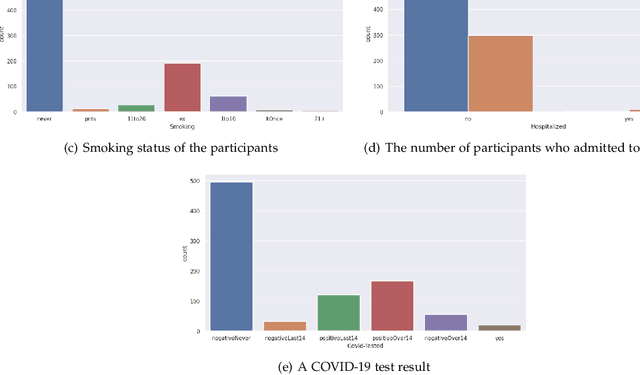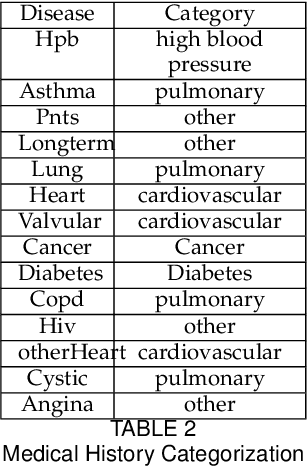Wafaa Aljbawi
Developing a Multi-variate Prediction Model For COVID-19 From Crowd-sourced Respiratory Voice Data
Feb 12, 2024



Abstract:COVID-19 has affected more than 223 countries worldwide and in the Post-COVID Era, there is a pressing need for non-invasive, low-cost, and highly scalable solutions to detect COVID-19. We develop a deep learning model to identify COVID-19 from voice recording data. The novelty of this work is in the development of deep learning models for COVID-19 identification from only voice recordings. We use the Cambridge COVID-19 Sound database which contains 893 speech samples, crowd-sourced from 4352 participants via a COVID-19 Sounds app. Voice features including Mel-spectrograms and Mel-frequency cepstral coefficients (MFCC) and CNN Encoder features are extracted. Based on the voice data, we develop deep learning classification models to detect COVID-19 cases. These models include Long Short-Term Memory (LSTM) and Convolutional Neural Network (CNN) and Hidden-Unit BERT (HuBERT). We compare their predictive power to baseline machine learning models. HuBERT achieves the highest accuracy of 86\% and the highest AUC of 0.93. The results achieved with the proposed models suggest promising results in COVID-19 diagnosis from voice recordings when compared to the results obtained from the state-of-the-art.
Developing a multi-variate prediction model for the detection of COVID-19 from Crowd-sourced Respiratory Voice Data
Sep 08, 2022



Abstract:COVID-19 has affected more than 223 countries worldwide. There is a pressing need for non invasive, low costs and highly scalable solutions to detect COVID-19, especially in low-resource countries where PCR testing is not ubiquitously available. Our aim is to develop a deep learning model identifying COVID-19 using voice data recordings spontaneously provided by the general population (voice recordings and a short questionnaire) via their personal devices. The novelty of this work is in the development of a deep learning model for the identification of COVID-19 patients from voice recordings. Methods: We used the Cambridge University dataset consisting of 893 audio samples, crowd-sourced from 4352 participants that used a COVID-19 Sounds app. Voice features were extracted using a Mel-spectrogram analysis. Based on the voice data, we developed deep learning classification models to detect positive COVID-19 cases. These models included Long-Short Term Memory (LSTM) and Convolutional Neural Network (CNN). We compared their predictive power to baseline classification models, namely Logistic Regression and Support Vector Machine. Results: LSTM based on a Mel-frequency cepstral coefficients (MFCC) features achieved the highest accuracy (89%,) with a sensitivity and specificity of respectively 89% and 89%, The results achieved with the proposed model suggest a significant improvement in the prediction accuracy of COVID-19 diagnosis compared to the results obtained in the state of the art. Conclusion: Deep learning can detect subtle changes in the voice of COVID-19 patients with promising results. As an addition to the current testing techniques this model may aid health professionals in fast diagnosis and tracing of COVID-19 cases using simple voice analysis
 Add to Chrome
Add to Chrome Add to Firefox
Add to Firefox Add to Edge
Add to Edge